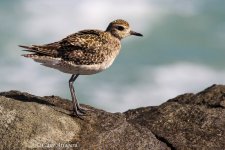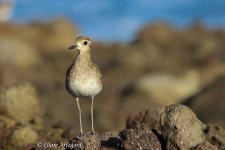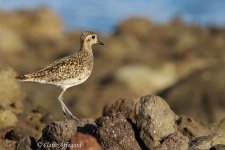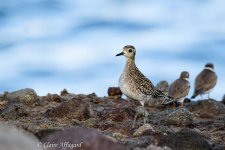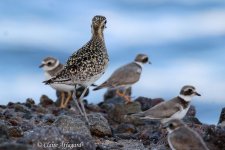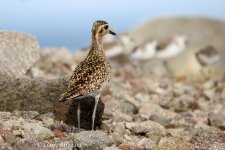Valéry Schollaert
Respect animals, don't eat or wear their body or s
Photo from Claire Affagard, shared with permission ; December 2019/January 2020. She has been told this bird is a Pacific Golden Plover (first for the island of Guadeloupe) while American Golden Plover is a common bird there. Reasons given seem weak though, and we'd like a confirmation.
Thanks all.
Thanks all.




